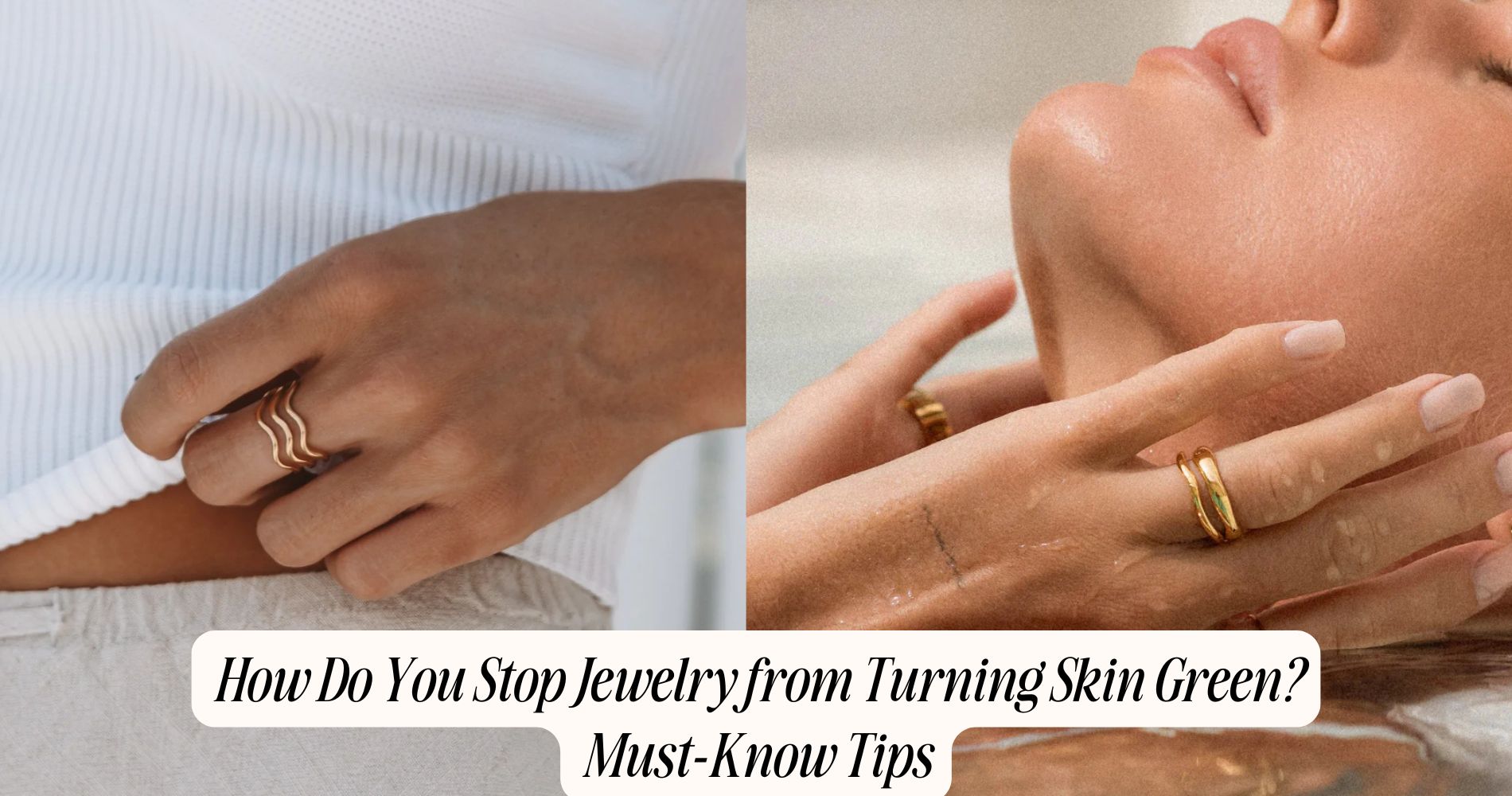
How Do You Stop Jewelry From Turning Skin Green? Must-Know Tips
How do you stop jewelry from turning skin green? The key is to choose pieces made from hypoallergenic metals like stainless steel, titanium, or platinum, and steer clear of copper alloys whenever possible. You can also apply a thin layer of clear nail polish or use a jewelry shield to create a protective barrier between your skin and the metal. For added protection, browse hypoallergenic jewelry specifically designed to be safe for sensitive skin. Keep your jewelry clean and dry, and remove it before using lotions, perfume, or going for a swim. With just a few smart steps, you can easily avoid those annoying green stains.
Why Does Jewelry Turn Your Skin Green?
When certain types of jewelry touch your skin, they can trigger a chemical reaction that leaves a green discoloration. This reaction usually happens when metals in the jewelry, like copper alloys, interact with moisture, sweat, or acids on your skin.
If you have skin sensitivity or a metal allergy, your skin’s natural chemistry can speed up this process, making you more prone to green stains. The green color forms as metal ions oxidize and create compounds that transfer to your skin.
You’re more likely to notice this effect if you wear jewelry for extended periods or in humid conditions. To minimize this, keep your skin dry, remove jewelry before washing, and choose protective coatings or hypoallergenic materials whenever possible.
Which Metals Are Most Likely to Cause Green Stains?
Copper stands out as the primary metal responsible for turning your skin green, especially in jewelry like rings, bracelets, and necklaces. When copper reacts with the acids and moisture on your skin, it forms copper salts through a chemical reaction, causing that telltale green stain.
Brass and bronze, which both contain significant amounts of copper, can also lead to this effect. Even some gold and silver jewelry can cause green marks if they’re alloyed with copper for strength.
If you have a metal allergy, you might notice irritation or redness in addition to discoloration. Nickel is another culprit, though it more often causes allergic reactions than green stains.
To minimize these effects, opt for stainless steel, platinum, or higher-karat gold jewelry.
Everyday Habits That Make the Problem Worse
Although you mightn't realize it, several common habits accelerate the green staining caused by certain metals in jewelry. Applying lotions, perfumes, or sunscreen directly onto your skin before putting on rings or bracelets can trap moisture and chemicals against the metal. These residues interact with copper and nickel alloys, increasing the chance of green discoloration.
Adjust your skincare routines by allowing products to fully absorb before wearing jewelry. Additionally, sweat management is key—sweat contains salts and acids that speed up the reaction between metal and skin.
If you exercise, work outdoors, or live in a humid climate, remove your jewelry beforehand and clean both your skin and the pieces afterward. These small adjustments can dramatically reduce unwanted green stains on your skin.
Choosing Hypoallergenic Jewelry Materials
If you want to avoid green skin stains altogether, selecting hypoallergenic jewelry materials is the most effective strategy. Choose metals like surgical-grade stainless steel, titanium, platinum, or 14k+ gold, as these contain few to no reactive alloys that trigger skin discoloration.
Sterling silver is another good option if it’s nickel-free. Always confirm the composition before purchasing, especially with fashion jewelry.
Some pieces use metal coatings—such as rhodium or gold plating—to reduce direct contact with base metals like copper or nickel, but remember these coatings can wear off over time.
Prioritize solid hypoallergenic options for daily wear, since they minimize chemical reactions with your skin. By investing in quality materials, you’ll keep your jewelry looking great and your skin free from unwanted stains.
Simple Ways to Create a Barrier Between Jewelry and Skin
Even with the best hypoallergenic metals, some jewelry can still cause green stains if coatings wear thin or trace alloys remain. To prevent direct contact between your skin and the metal, apply a thin layer of clear nail polish to areas that touch your skin—this works especially well for layered necklaces and intricate gemstone settings. Let the polish dry completely before wearing your pieces.
For a more robust option, use jewelry shield solutions specifically formulated to create an invisible barrier. If you’re dealing with rings or bracelets, try lining the interior with transparent, medical-grade adhesive tape for temporary protection. Remember to reapply the barrier after heavy wear or exposure to moisture, as these protective coatings can degrade over time with regular use.
Cleaning and Caring for Your Jewelry
Proper cleaning and care extend your jewelry’s lifespan and minimize the risk of green stains on your skin. To prevent tarnish and corrosion, use mild soap and warm water for routine cleaning. Gently scrub with a soft brush, especially in crevices where debris collects. Rinse thoroughly and dry with a lint-free cloth to avoid moisture buildup.
For jewelry maintenance, store pieces in airtight bags to reduce exposure to air and humidity, both of which accelerate oxidation. Avoid contact with lotions, perfumes, and cleaning agents—these substances can degrade protective coatings and trigger skin reactions.
As part of your care tips, inspect clasps, prongs, and settings regularly to spot early damage. Consistent jewelry maintenance helps preserve metal integrity and keeps your accessories looking pristine.
DIY Hacks to Prevent Green Stains
Although some jewelry inevitably reacts with your skin, you can use simple DIY hacks to minimize green stains and irritation. Start by applying a thin layer of clear nail polish to the parts of your jewelry that touch your skin; this acts as a barrier, preventing metal ions from transferring. Reapply every few wears for continued protection.
If you’re keeping up with fashion trends that involve brass or copper, these metals are especially prone to oxidation, so quick coatings are essential. You can also use jewelry wax or even a tiny dab of petroleum jelly before wearing. These methods won’t alter the piece’s appearance or its cultural symbolism, so you’ll preserve both style and meaning while keeping your skin free from green discoloration.
What to Do If Your Skin Already Turned Green
If your skin has already developed a green tint from wearing jewelry, don’t panic—this discoloration is harmless and easy to address. Simply wash the affected area with warm water and mild soap to remove any metal residue.
You can gently exfoliate with a soft washcloth if needed, but avoid harsh scrubbing. Applying a moisturizer afterward helps restore your skin’s natural barrier.
While green stains are common with certain metals due to oxidation, they don’t reflect poorly on your hygiene or sense of style. In fact, many fashion trends and pieces with cultural significance use copper or brass, which are more likely to react this way.
When to Upgrade or Replace Your Jewelry
Addressing green stains on your skin offers a short-term fix, but consistently experiencing discoloration signals it may be time to contemplate upgrading or replacing your jewelry.
If your pieces are made from copper alloys or plated metals, persistent tarnishing is inevitable. Upgrading to solid gold, platinum, or surgical-grade stainless steel eliminates skin reactions and extends durability.
Keep an eye on fashion trends—switching out outdated styles can refresh your look while solving skin issues.
Evaluate your jewelry storage, too. Poor storage accelerates corrosion, so consider anti-tarnish bags or lined boxes to protect new investments.
If regular cleaning and coating applications no longer help, replacement is the most practical solution.
Prioritize hypoallergenic and nickel-free options for maximum comfort and longevity.
Frequently Asked Questions
Can Green Stains From Jewelry Indicate a Medical Condition?
Green stains from jewelry usually result from a reaction between your skin and the jewelry material, not a medical condition. However, if you notice allergy symptoms like itching or rash, you could be reacting to certain metals.
Are Certain Skin Types More Prone to Green Discoloration?
You’re more likely to notice green discoloration if you have higher skin sensitivity or acidic skin. The jewelry material matters—copper and brass alloys react more with your skin, especially if you sweat or use lotions.
Can Professional Jewelers Apply Permanent Protective Coatings?
You can rely on professional jewelers to apply permanent protective coatings, enhancing your jewelry maintenance routine. These specialized barriers prevent direct metal-to-skin contact, using advanced materials and techniques for long-lasting, practical protection against potential discoloration or irritation.
Does Body Sweat Composition Affect Jewelry Staining?
Your body sweat composition absolutely affects jewelry staining. If you have high skin acidity or metal allergies, you're more likely to notice discoloration. You can minimize reactions by choosing hypoallergenic metals and keeping your skin and jewelry clean.
Is Green Staining a Sign of Fake or Low-Quality Jewelry?
You might see green staining as a tarnish indicator, but it doesn't always mean your piece lacks jewelry authenticity. Lower-quality metals often cause this, so choose materials like stainless steel or solid gold for better results.
Conclusion
To keep your skin free from green stains, pay attention to both the metals in your jewelry and your daily habits. Choose hypoallergenic materials when possible, use clear nail polish or barrier creams, and clean your pieces regularly. Quick DIY fixes can help, but if irritation persists, it’s time to upgrade to higher-quality metals. With a little care and the right choices, you’ll enjoy your jewelry without worrying about discoloration or discomfort.







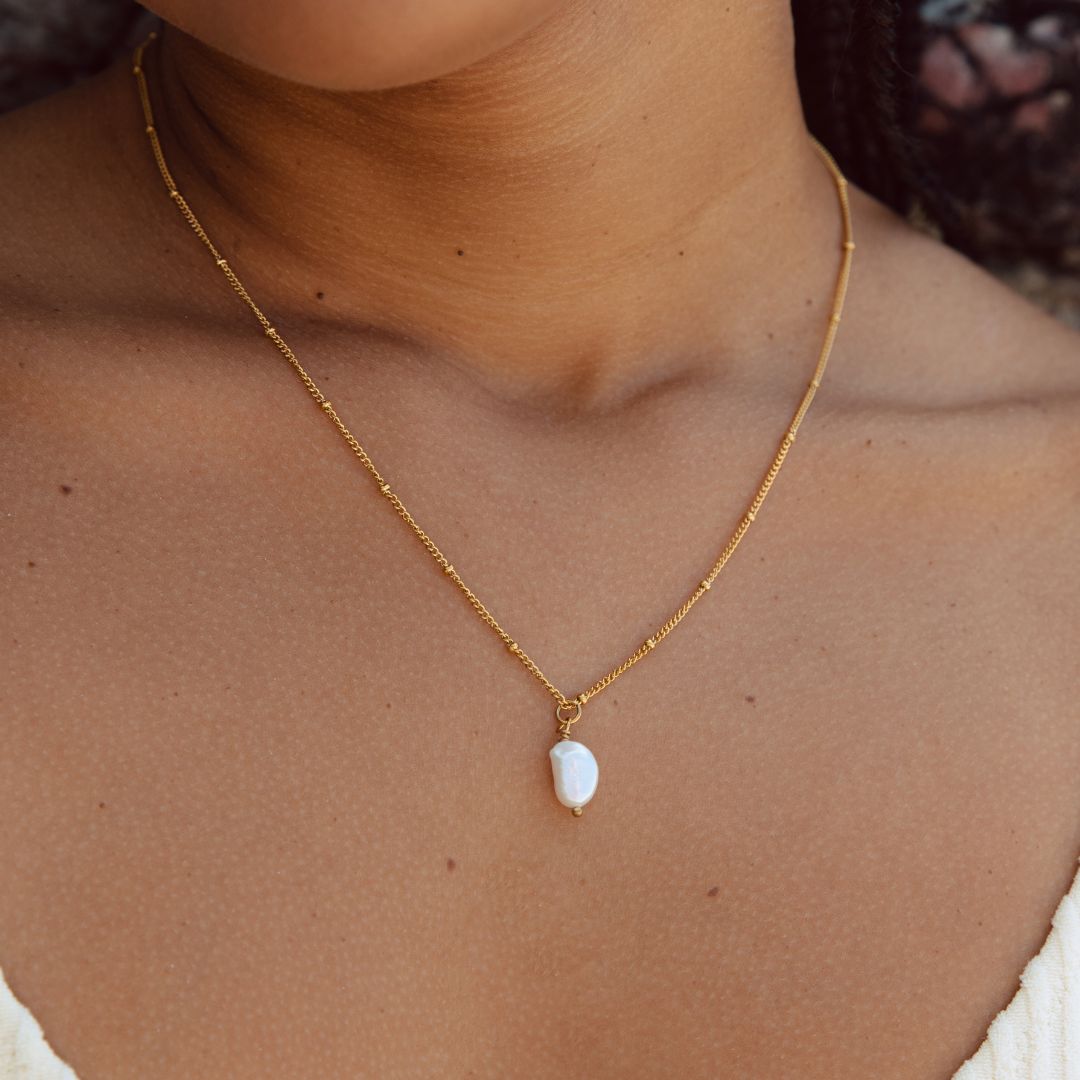

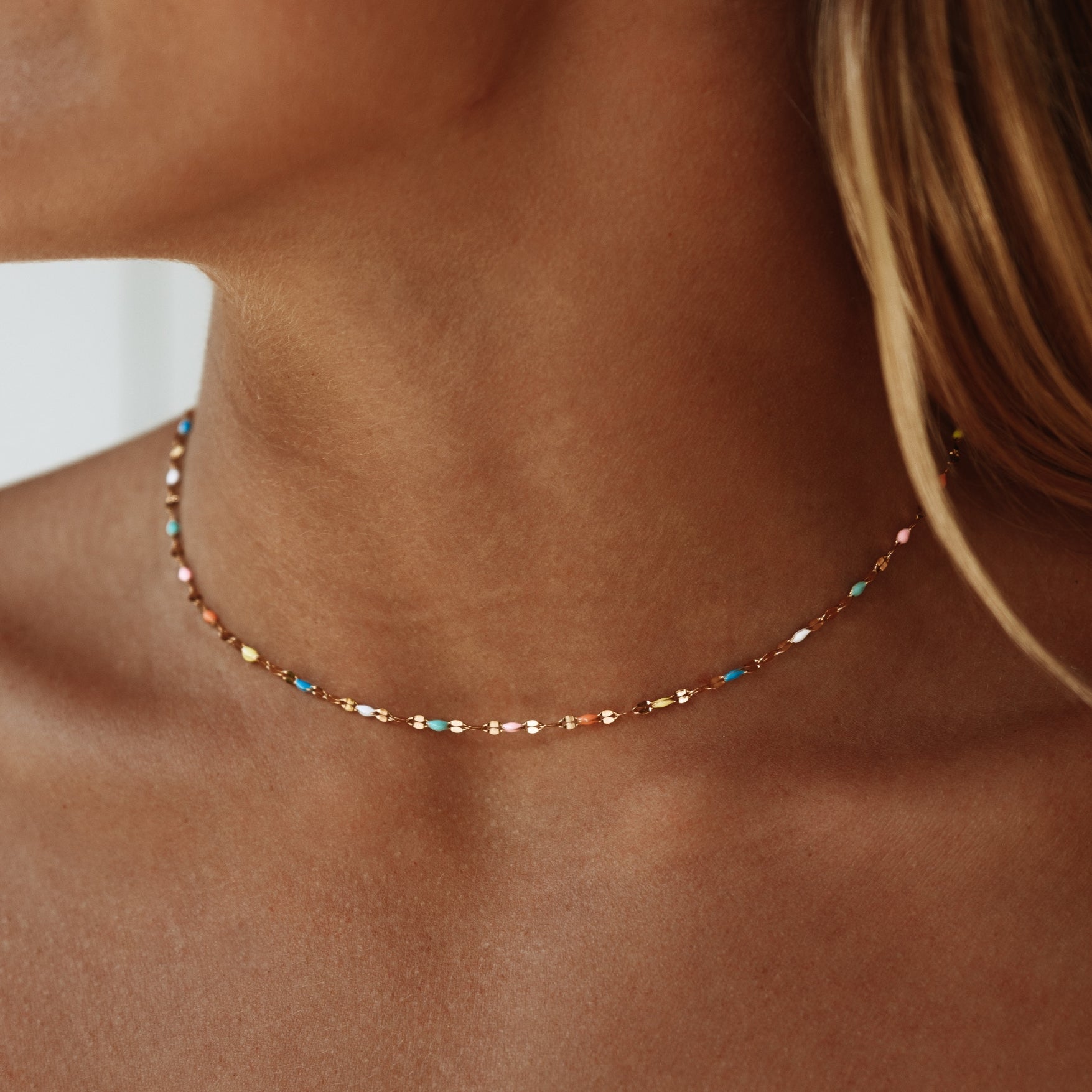


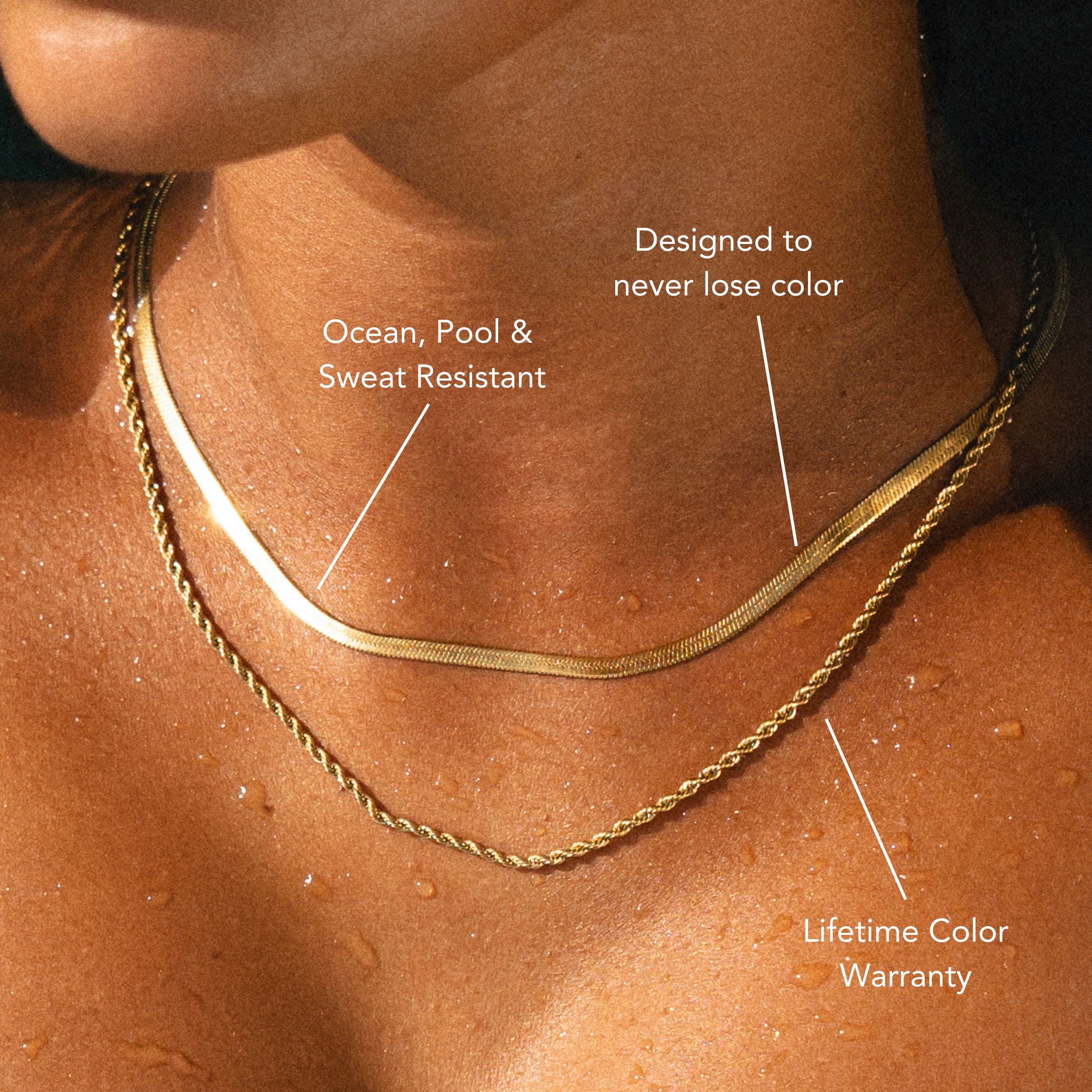
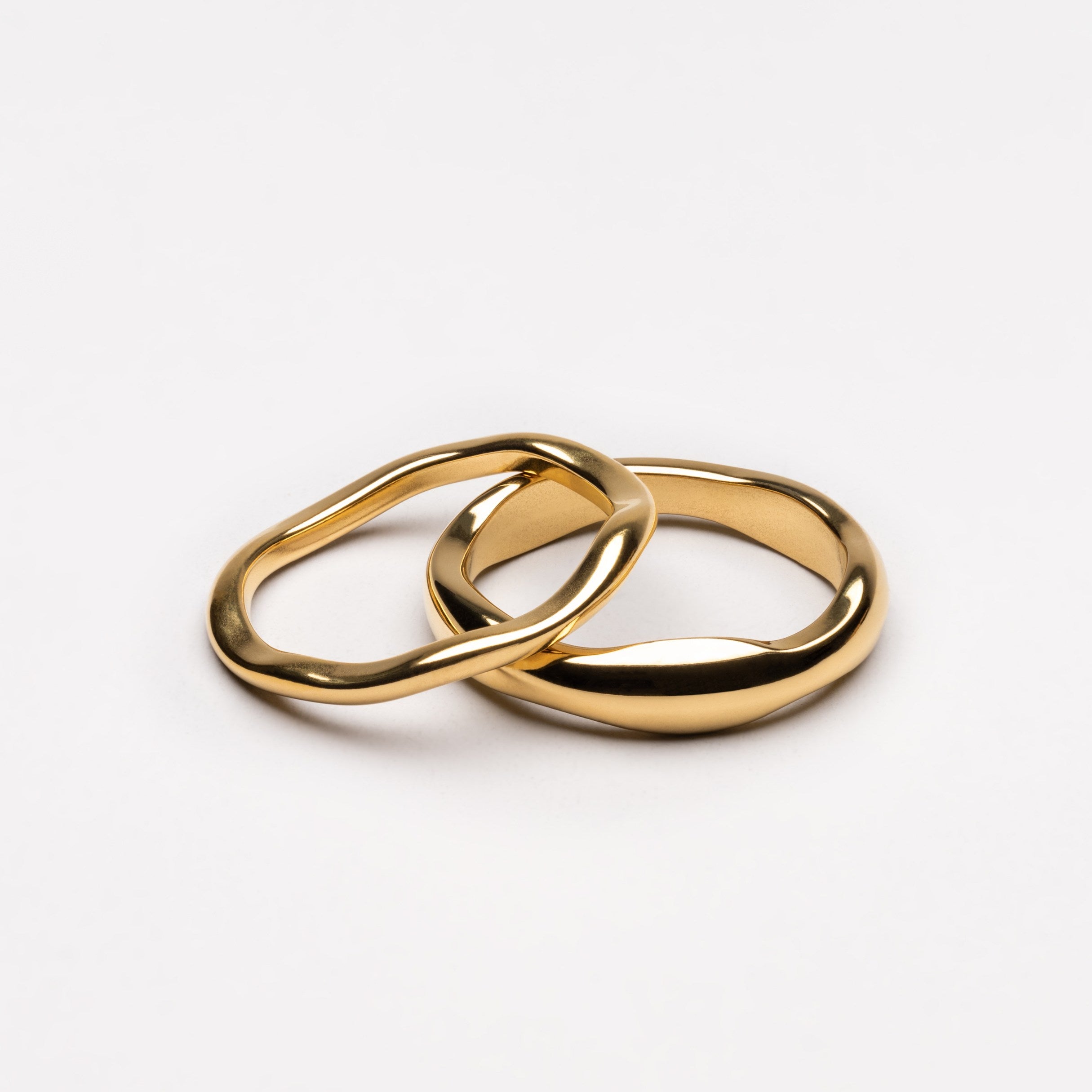


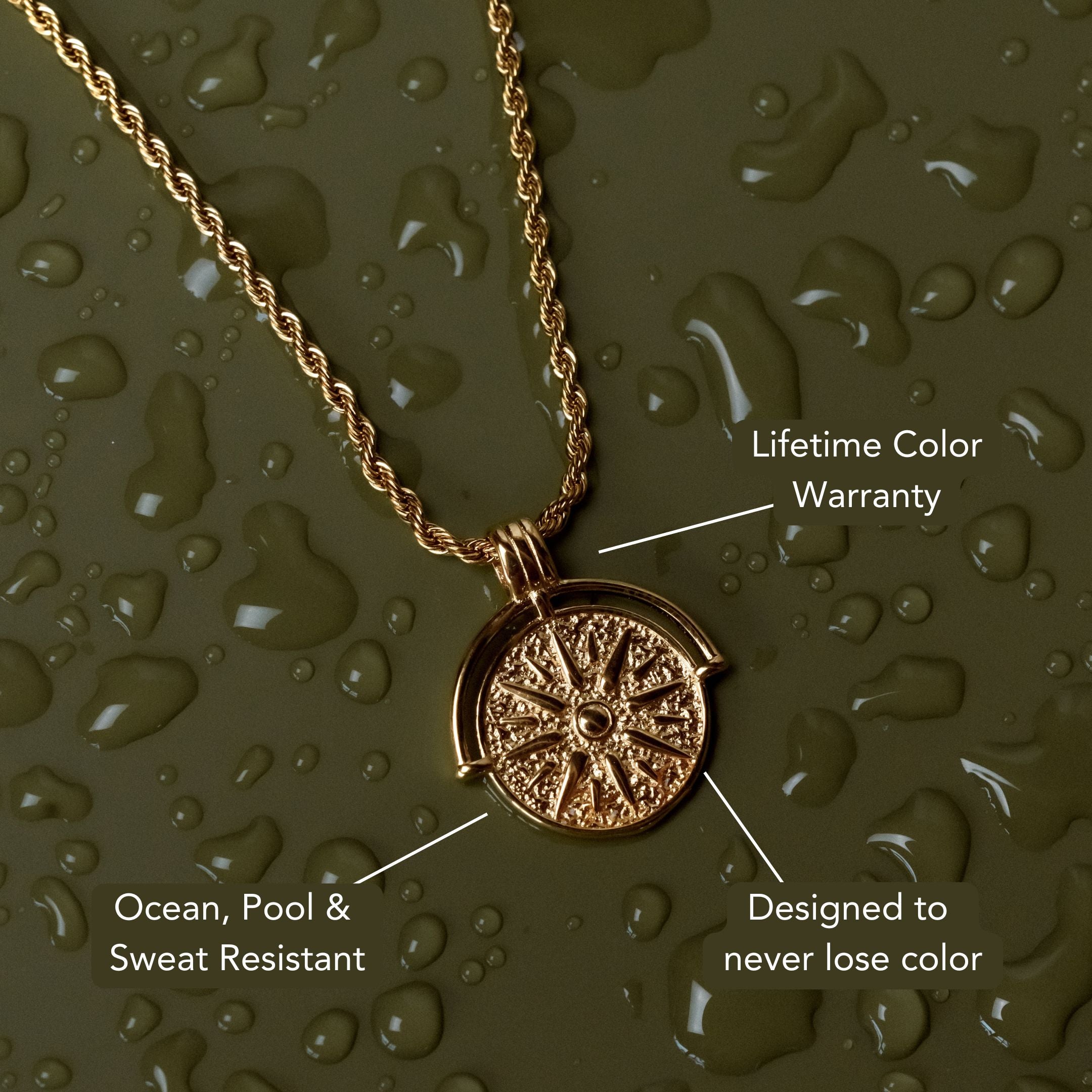
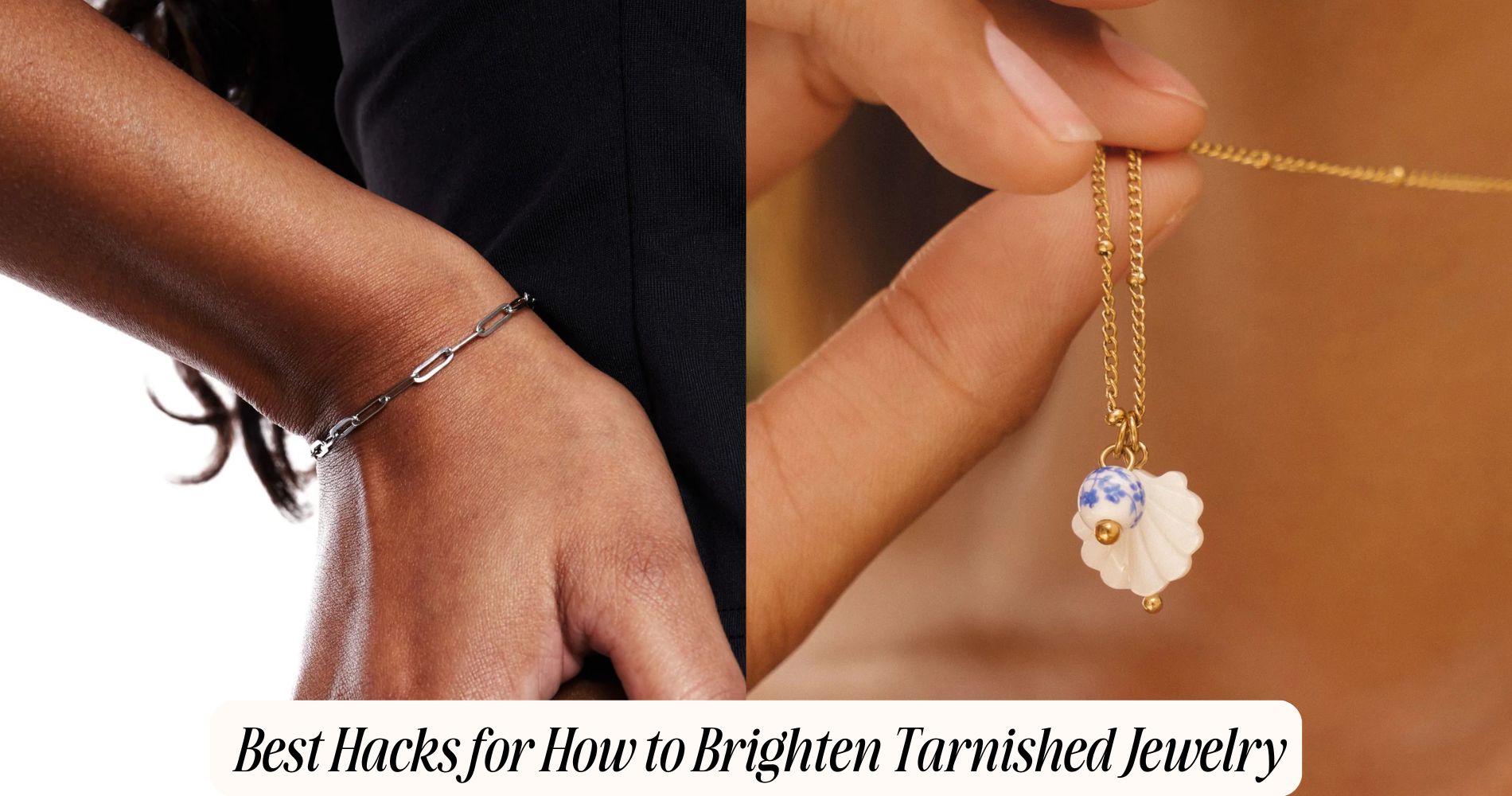





コメントを書く
このサイトはhCaptchaによって保護されており、hCaptchaプライバシーポリシーおよび利用規約が適用されます。